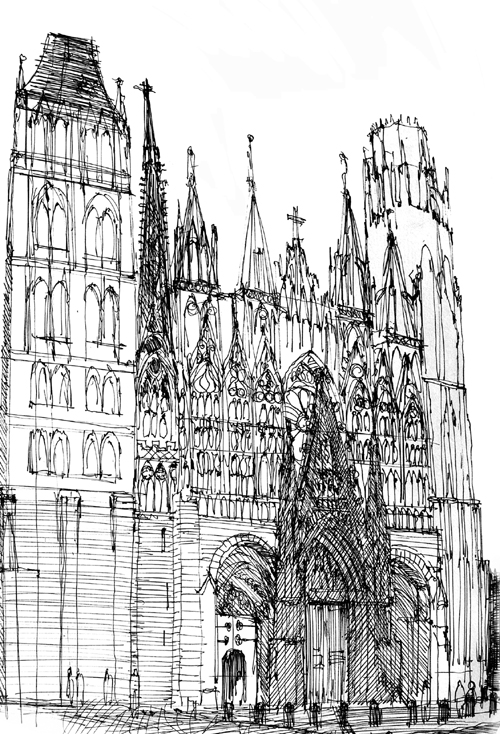IDEO appeared on my radar three times the other day. First, it was an email with a forwarded article on the Toolkit. Then I noticed the name in the Contributor Directory of the book 1000 Product Designs along with my own. Then, as I was multi-tasking in my studio listening to Chip and Dan Heath's Made to Stick audio recording, IDEO was mentioned again. Obviously, I had to dig deeper.
It turns out that Tim Brown, CEO and president of IDEO, wrote a book called Change by Design that advocates approaching design not as a vehicle for consumerism, but as a tool to address human needs. The author-designer talks about appropriating design from the "priesthood" of a select few and putting it in the hands of everyone. He urges to move from design to "design thinking." He says that the way to do it is by starting to ask the right questions.
My book's working title (not published yet) is Live by Design: Engage the Architect Within. It is a "marriage" of architecture and self-help. The premise is to help people to solve their "difficulties," such as money problems, lack of recognition, depression, anxiety, and addiction, just to name a few, by directing them to design for resolution.
Tim Brown insists that the role of design is not to make something look better, but to improve the experience. According to him, a designer has to: Start with human need. Build in order to think. Learn by prototyping. Have an expansive view.
I think this approach works as applied to design of human experience or construction of one's life. Below, I demonstrate how it is possible to erect constructive thoughts in order to overcome life's challenges.
Start with human need. Your day job is filled with multiple levels of people being afraid to say the wrong thing to each other and to clients. You sit at your desk feeling anxious. Where do you begin? Nothing is really up to you. You are not in control.
Your anxiety has a feel of a bubbling, murky mixture that is flooding the ground plane of your reality. Ghost voices inside tell you that it is "all your fault" and that you deserve to be in this predicament. You are too scared to argue.
Build in order to think. Suddenly, you are "rescued" by a telephone call. While answering, you glance at a framed photograph of your daughter; it's perched on a shelf above the troublesome pile of untouched work. Just a snapshot capturing the exact moment she is about to take her very first step, standing in the shadow of a tree with one tiny foot inching out onto a sunny spot on the ground. Her face is full of delight, curiosity and shear determination.
Then, you turn your attention to a framed print on the wall. It is one of the views of Rouen Cathedral by Claude Monet. You forget those pesky ghost voices and start to wonder about the length of time in generations it must have taken to build this intricately complex structure and to make it appear effortless.
You start to wonder about its builders and the intensity of their dedication. Somehow, this mental imagery of their long apprenticeship, supreme skill and vision allows you to feel a sense of relief from your own deluge.
Learn by prototyping. The Master builders of Rouen Cathedral can offer you a lesson in how to offset the abhorrence of unfamiliar! And as your ghost voices start with the usual, you come up with an excellent argument: "Remember! Cathedrals of gossamer stonework and luminous glass are possible without computerized calculations, yet impossible without hard work!"
Have an expansive view. You gain control. You return to the work piled up on your desk. Clearly, you have been compromising your own efforts by exaggerating. Nothing is too big if it can be accomplished step-by-step. You think how much you admire your daughter's courage and her willingness to embrace the unknown, let alone the builders of Gothic Architecture. You too can acquire any skill by doing. You move on with renewed confidence and precision. You utter:
"I can begin before knowing the answers. As I focus on doing excellent work and gaining practical knowledge, solutions will emerge."
"Rouen Cathedral" sketch by Miller Yee Fong, Architect
